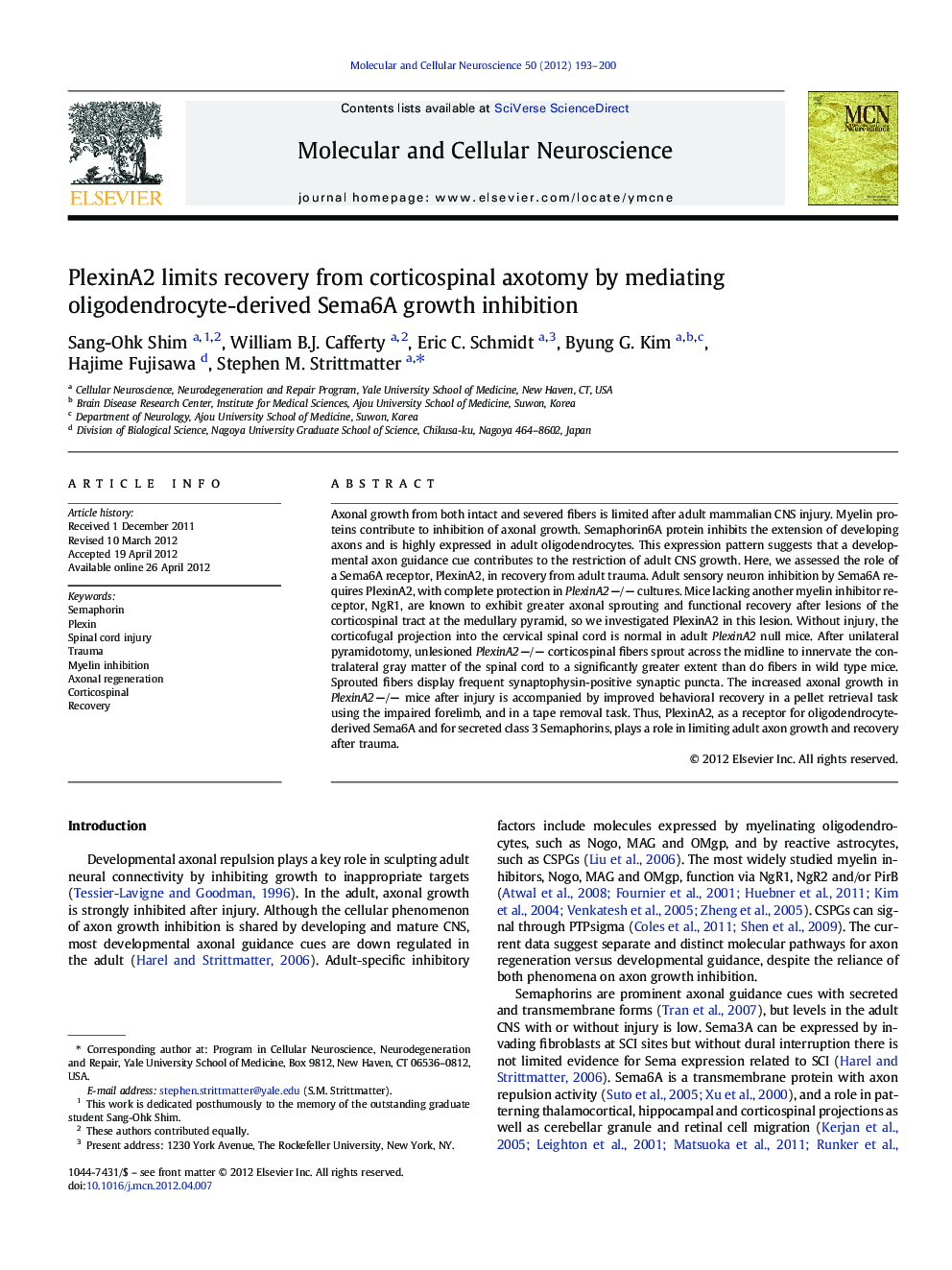| Article ID | Journal | Published Year | Pages | File Type |
|---|---|---|---|---|
| 2198630 | Molecular and Cellular Neuroscience | 2012 | 8 Pages |
Axonal growth from both intact and severed fibers is limited after adult mammalian CNS injury. Myelin proteins contribute to inhibition of axonal growth. Semaphorin6A protein inhibits the extension of developing axons and is highly expressed in adult oligodendrocytes. This expression pattern suggests that a developmental axon guidance cue contributes to the restriction of adult CNS growth. Here, we assessed the role of a Sema6A receptor, PlexinA2, in recovery from adult trauma. Adult sensory neuron inhibition by Sema6A requires PlexinA2, with complete protection in PlexinA2−/− cultures. Mice lacking another myelin inhibitor receptor, NgR1, are known to exhibit greater axonal sprouting and functional recovery after lesions of the corticospinal tract at the medullary pyramid, so we investigated PlexinA2 in this lesion. Without injury, the corticofugal projection into the cervical spinal cord is normal in adult PlexinA2 null mice. After unilateral pyramidotomy, unlesioned PlexinA2−/− corticospinal fibers sprout across the midline to innervate the contralateral gray matter of the spinal cord to a significantly greater extent than do fibers in wild type mice. Sprouted fibers display frequent synaptophysin-positive synaptic puncta. The increased axonal growth in PlexinA2−/− mice after injury is accompanied by improved behavioral recovery in a pellet retrieval task using the impaired forelimb, and in a tape removal task. Thus, PlexinA2, as a receptor for oligodendrocyte-derived Sema6A and for secreted class 3 Semaphorins, plays a role in limiting adult axon growth and recovery after trauma.
